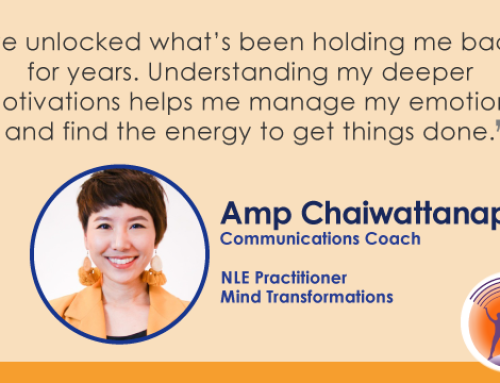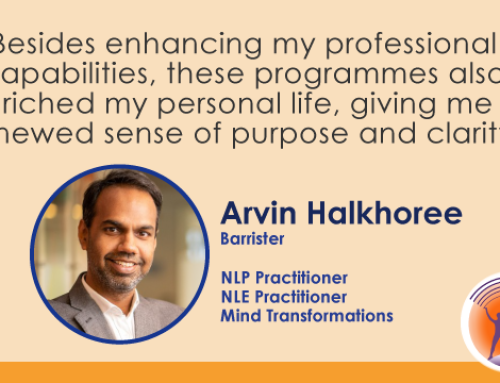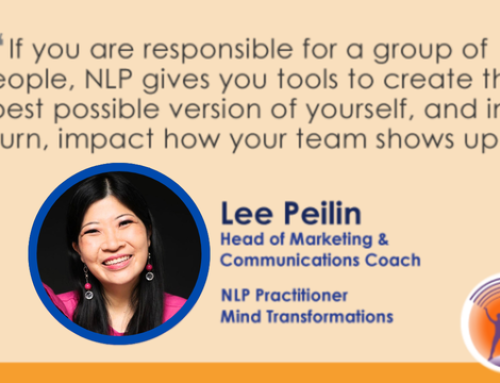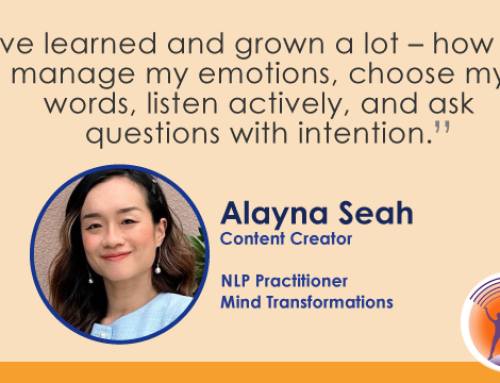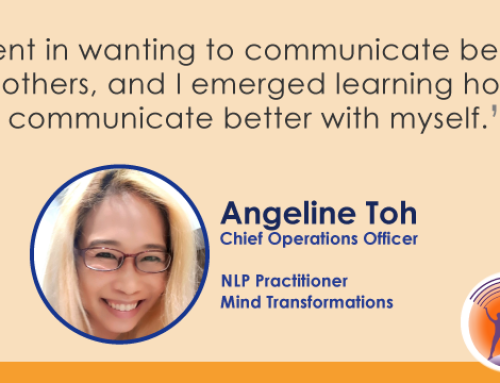by Vicky Chang
My experience as a Regional Customer Service Process Manager cum Commercial Trainer for five years has shown me that humane communication is good business communication. My work is not just about making changes in work cultures but more about making the work environment a good place to be.
My primary focus on Customer Service Process requires me to:
- delve deeply into the main and sub work processes of key dealers’ operations,
- convert work cultures and
- maintain strong structures that drive excellence.
The core values of NLP have opened up a new array of opportunities for me to effectively sow and harvest from my endeavours.
With NLP, it can be easier for people to be precise and creative in how they view the world and apply work methods, while being respectful in how they approach others. I internalised NLP, working with it as often as possible to make it second nature—at times in chunks, sometimes one step at a time.
One of my markets in this region, the automobile industry, has been expanding very rapidly.
It was too rapid for my clients to keep up—to know what is happening, where their new dealers are located and whether these dealers meet the required operation standard. They also could not be certain if dealers had competent staff to support day-to- day and long-term survival of their after sales business.
In the past year, many things were swept under the carpet and all clear evidence of poor dealer support and lack of staff competencies was wiped out. I had to start anew with each consultative visit. It was difficult to develop key after-sales staff or advance with imparting structured work.
Auto Reset
The poor survey results in customer satisfaction from 2002-year end and 2003-quarter one gave me grounds for fresh start-up with the existing Importer. The re-start involves:
a) retraining in the basics of the process
b) “mapping” or making root cause analysis
c) suggesting appropriate solutions to improve the situation and
d) implementing the improved work procedures with the Test-Operate-Test-Execute (TOTE) model.
It was also the best opportunity to include two other newly appointed Importers handling our business.
My retraining involved a group of 12 hardcore after-sales staff—
Service managers, service engineers, parts manager and field operations staff. In the automobile business, these are the people who seldom twitch to anecdotes or any of my intended “engaging & energizing audience” techniques.
The core issue was: I am an Asian female training men in areas that they had not paid too much attention to before.
My primary task was to change the mindset of this group. If not all, at least 90 % of the participants did not believe in human relations or working as a team. The management style was very militant, traditional to the culture of this market.
Tough Guys
This was a perfect time to test my sensory acuity—the ability to read body language—especially to build rapport within the first three minutes at the opening. The first thing I noticed was the disorder in the training room, some were plugged into laptops to finish off reports or write mail, some were chatting over the hand phone. Language was a sensitive issue too since English was not the group’s preferred language, though all spoke it pretty well.
Nevertheless, I felt comfortable with my preparation and set-up of the training room (in their territory) and I knew I could rely on two most applicable NLP presupposition to put me in the right state – I know that I can believe in the resources I have within me to act effectively plus I could influence these 12 participants
Tough Guys to Nice Guys and Team Players
The two-day course on the process resulted in superb participant-trainer interaction. My introduction was a story with a strong moral relating to the course objective. This broke the ice and I was soon engaging the participants with activities to impact the thinking and behaviour. Noting each participant’s preferred representative system (dominant learning system) added the possibility of blending in predicates to catch the attention of individuals—especially where stress points were needed. By this time, the participants were now more relaxed facially and physically; there was no disturbances from hand phones, laptops were put away and everyone participated without hesitation.
The service process course was all about how people could be humane with internal and dealer staff and how best to improve customer satisfaction.
Appropriately, I used The NLP presupposition that “The map is not the territory” to communicate the importance of appreciating and respecting other people’s point of view—till there was an understanding and a consensus in seeing things differently. Participants were making statements about being more willing to support their dealers. It was a definite turnaround of attitudes. They even agreed to try coaching supporting and giving constructive feedback to dealers.
They were even beginning to understand that they could improve teamwork within their own importer organisation so that they could set an example for their Dealers.
All together, I spent five days with the same group.
By the end of the week, all intended activities to improve, support and coach the dealers from each of the three Importers were mapped out with a realistic time-line. This requirement ensures timely follow through of the process and identifies further development course/s appropriate to raise the standard of the Importers and Dealers.
Months later, all three Importers reported structural change with the dealers’ service organisation; from “traditional” to “team-concept”.
This is a good start as many of the steps of the process where actions are required calls for accountability and responsibility.
In conclusion, I have to express that NLP has nudged me to be bold and big when taking a different approach to how I used to manage my training.
When I started training a year ago, I focused a lot on teaching content, not people. To follow the historical training standard, I used high-quality training materials and handouts. As I look back, I am thankful that I had always managed to practise group discussions that helped with gaining some effectiveness from the overall training. Now, I am confident and fully aware of my own resources, I am very adaptable and I have the right tools to make my training interesting and eventful. The contexts of my materials no longer limit my timing. The approach I currently would engage in is more fluid, allowing more time when there is any emphasising on hot topics.
In addition, the different approaches of “break-state” I undertake to bring draw out different strengths and abilities of participants to suit particular situations–stretches me all the time so that I get a positive outcome. I become more creative each time the next training happens.
Having said all that, I leave you with this NLP presupposition, “As opposed to being most real and accurate, the wisest maps are those that make available the widest and richest number of choices.”
Vicky Chang attended Mind Transformation’s Residential NLP course in November 2002 and received her NLP Practitioner’s certification on 4 Dec 2002.
[inf_infusionsoft_inline optin_id=”optin_2″]


